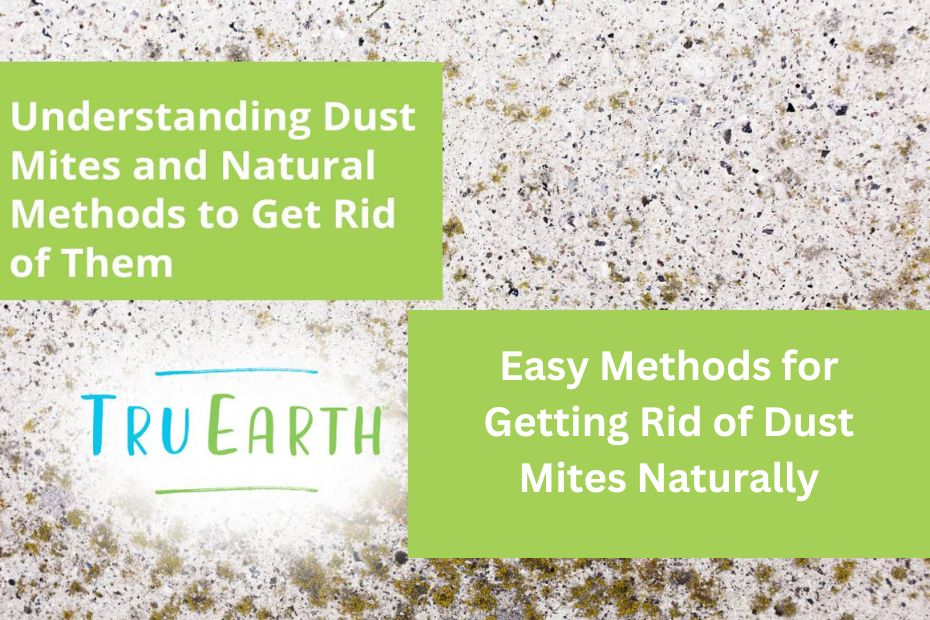Dust mites are microscopic pests that thrive in warm and humid environments, often found in bedding, carpets, and upholstered furniture. These tiny creatures feed on dead skin cells shed by humans and animals, making our homes their ideal habitat. While they may be invisible to the naked eye, their presence can trigger allergies and asthma symptoms in susceptible individuals. Fortunately, there are several natural methods to effectively get rid of dust mites and create a healthier living environment.
Introduction to Dust Mites
Dust mites are members of the arachnid family, closely related to spiders and ticks. Despite their minuscule size, they can have a significant impact on indoor air quality and human health. Dust mite droppings contain allergens that can cause allergic reactions, including sneezing, coughing, and itchy eyes. For those with asthma, exposure to dust mites can exacerbate symptoms and lead to respiratory distress.
Why Natural Methods?
While there are chemical-based solutions available for dust mite control, many people prefer natural methods due to concerns about potential health risks associated with synthetic pesticides and cleaners. Natural remedies are often safer for both humans and pets, as well as being more environmentally friendly.
Regular Cleaning Habits
One of the most effective ways to reduce dust mite populations is through regular cleaning routines. Vacuuming carpets, rugs, and upholstery with a vacuum cleaner equipped with a HEPA filter can remove dust mites and their debris. Additionally, washing bedding, including sheets, pillowcases, and blankets, in hot water (at least 130°F or 54°C) can kill dust mites and remove allergens.
Maintaining Optimal Humidity
Dust mites thrive in humid environments, so controlling indoor humidity levels can help deter their growth. Using dehumidifiers or air conditioners can reduce moisture in the air, making it less hospitable for dust mites. Natural methods for controlling humidity include using moisture-absorbing materials such as silica gel packets or bamboo charcoal.
Natural Repellents
Several natural substances have been found to repel dust mites due to their antimicrobial properties. Essential oils such as tea tree oil, eucalyptus oil, and lavender oil can be diluted with water and sprayed onto bedding and soft furnishings to deter dust mites. Herbal remedies such as neem and thyme have also been shown to be effective in repelling these pests.
Baking Soda and Vinegar Solutions
Baking soda is a versatile natural cleaner that can be used to deodorize and disinfect surfaces. Sprinkling baking soda onto carpets and upholstery before vacuuming can help eliminate dust mites and neutralize odors. Vinegar, with its acidic properties, can also be used as a natural disinfectant when diluted with water and sprayed onto surfaces.
Sunlight Exposure
Sunlight is a natural enemy of dust mites, as UV rays have germicidal properties that can kill these microscopic pests. Allowing bedding, cushions, and soft toys to bask in the sun for a few hours can help reduce dust mite populations. However, it’s essential to avoid prolonged exposure to direct sunlight, as this can cause fading and damage to fabrics.
Freezing Method
Another natural way to eliminate dust mites from soft furnishings is by subjecting them to freezing temperatures. Placing items such as pillows, stuffed animals, and bedding in the freezer for a few hours can kill dust mites and their eggs. After freezing, it’s essential to shake out the items outdoors to remove any dead mites and debris.
Mattress and Pillow Covers
Investing in dust-proof covers for mattresses, pillows, and duvets can create a barrier that prevents dust mites from infiltrating these items. These covers are made of tightly woven fabric that is impermeable to dust mites and their allergens, helping to protect against allergic reactions and asthma flare-ups.
Regular Washing of Soft Furnishings
In addition to washing bedding, it’s essential to clean other soft furnishings regularly to remove dust mites and their allergens. Carpets, rugs, and upholstery can be vacuumed and steam cleaned to eliminate dust mites and bacteria. For larger items that cannot be washed at home, professional cleaning services may be necessary.
Reducing Clutter
Dust mites thrive in cluttered environments where there are plenty of hiding spots and food sources. By decluttering your home and minimizing the number of knick-knacks, books, and soft toys, you can reduce dust mite populations and make it easier to clean and maintain a dust-free environment.
Use of HEPA Filters
High-efficiency particulate air (HEPA) filters are designed to capture tiny particles, including dust mites and their allergens, from the air. Installing HEPA filters in vacuum cleaners, air purifiers, and HVAC systems can help improve indoor air quality and reduce allergic reactions caused by dust mite exposure.
Avoiding Moisture Accumulation
Moisture is a breeding ground for dust mites and mold, both of which can exacerbate allergy symptoms. To prevent moisture accumulation, fix any leaks or water damage promptly, and use exhaust fans in bathrooms and kitchens to vent humidity outside. Additionally, using a hygrometer to monitor indoor humidity levels can help ensure they stay within the optimal range of 30-50%.
Dust Mite Allergy Management
For individuals with dust mite allergies, managing symptoms is an essential part of maintaining quality of life. In addition to implementing natural methods for dust mite control, allergy sufferers can find relief through natural remedies such as saline nasal rinses, steam inhalation with essential oils, and herbal teas with anti-inflammatory properties.
Conclusion
Dust mites may be a common household nuisance, but with the right approach, it’s possible to reduce their populations naturally and create a healthier living environment. By incorporating regular cleaning habits, maintaining optimal humidity levels, and using natural repellents and cleaning solutions, you can effectively control dust mites without resorting to harsh chemicals. Remember to combine these methods for maximum effectiveness and enjoy the benefits of a dust-free home.
FAQs
1. Are dust mites visible to the naked eye?
- No, dust mites are microscopic creatures that cannot be seen without magnification.
2. Can dust mites cause health problems other than allergies?
- Yes, dust mites can exacerbate asthma symptoms in individuals with asthma.
3. How often should bedding be washed to control dust mites?
- Bedding should be washed weekly in hot water (at least 130°F or 54°C) to kill dust mites and remove allergens.
4. Do dust-proof covers really work?
- Yes, dust-proof covers create a barrier that prevents dust mites from infiltrating mattresses, pillows, and duvets.
5. Can natural remedies effectively control dust mite allergies?
- Yes, natural remedies such as saline nasal rinses, steam inhalation with essential oils, and herbal teas can help alleviate symptoms of dust mite allergies.


